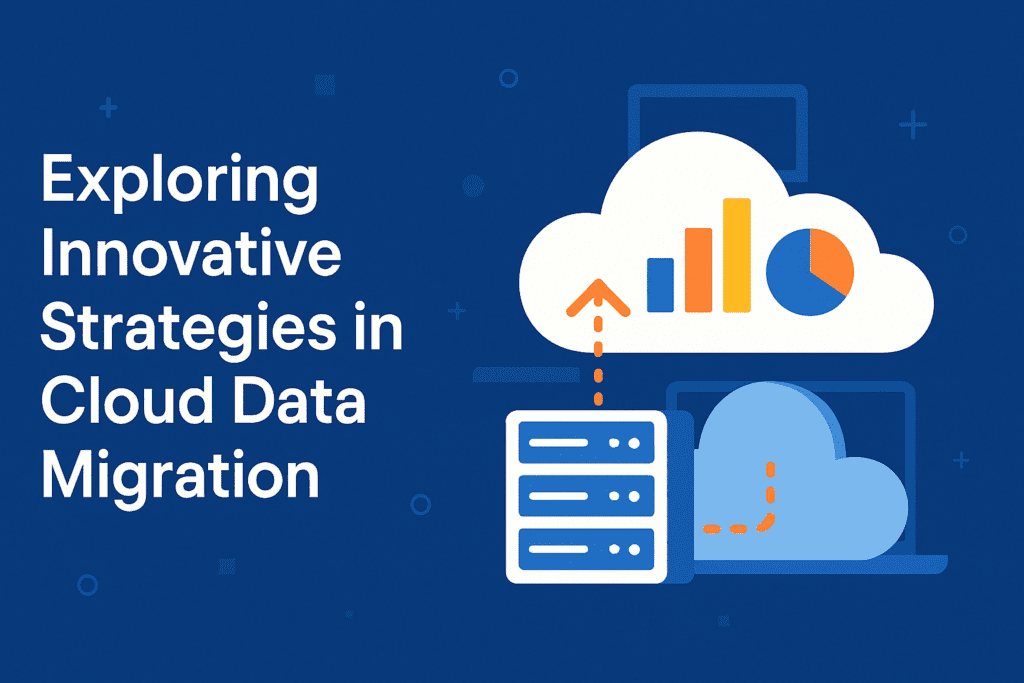New Methods for Cloud Data Migration
New Methods for Cloud Data Migration
Summary
Cloud data migration is more than just a tech upgrade — it’s also a strategic move toward scalability, performance and cost-efficiency in today’s fast-paced digital world In this blog post, we will discuss newer and innovative ways to migrate and manage the data in the cloud in a transformative way. Explore the ways top firms such as Netflix are reinventing operations from replacing old infrastructure and utilizing AI-driven automation to balancing costs, improving security, and adopting hybrid migration patterns.Learn why success lies not just in the move itself, but in continuous validation, smart architecture planning, and proactive monitoring in the cloud era.

Data is the backbone of every organization in the era of digitization today. This necessitates efficient storage and management of this data, as businesses expand and technology advances. Cloud data migration comes into play here.
Cloud data migration describes the act of migrating data and applications, as well as other business elements, from on-premises systems to a cloud-based environment — or transferring them between cloud platforms. This allows businesses to grow resources, increase performance, and in many cases save money on operations.
Consider a global leader in streaming services like Netflix. The company has migrated its operations to cloud infrastructure to manage millions of concurrent users and cosmic volumes of content. This transition helped them in scaling their services in a dynamically developing manner while ensuring minimum time downtime and speedy delivery.
Now, let’s move into the new technologies and creative strategies driving cloud data migration in the present day.
Transforming Conventional Infrastructure
Migrate to Modern – It Is More Than Just Migration of Data Cloud migration allows organizations to move away from inflexible systems to adaptable environments that can grow with their needs. It allows for better responsiveness, and guarantees uptime even at heavy volumes.
As an example, businesses that have seasonal surges (ecommerce platforms during holiday sales for example) gain from cloud since it can scale infrastructure seamlessly when the need arises without incurring high upfront costs.
Smart Automation at the Core
Intelligent automation is one of the game-changing advancements in cloud migration. Instead of mapping out potential migration paths manually, AI- and machine learning-powered tools now evaluate workloads, recommend migration strategies, and even implement them with limited supervision.
These tools minimize human error, speed up the migration timeline, and effectively manage sensitive data to secure it from breaches. You can think of it like GPS for a road trip, determining the fastest route and when to avoid congestion (or, in this case, data inconsistency and performance limitations).
Service Aliases for Performance and Cost Optimization
Transformative migration strategy, not only a successful migration to the cloud, but on-going performance and cost efficiency. Leveraging this data, finding usage patterns, and optimizing resource allocation these companies will be able to save on cost without sacrificing performance.
An example would be a financial services firm utilizing auto-scaling to balance workloads; they would run complex reports during business hours and scale down when no one is in the office, saving unnecessary expenses.
Redesigning How Mechanisms for Data Transfer
Migration doesn’t stop with data movement. To reap the full benefits of the cloud, organizations need to reengineer their architecture to be truly optimized for compute, memory, and storage. Contemporary cloud providers, for example, provide instance types specifically optimized for various workloads — from databases to machine learning models.
Moreover, ensuring that services are available, cheap, and highly performant with different levels of usage is possible through smart resource orchestration.
Plan Cloud-Ready Infrastructure
For large volume data movement, particularly to enterprises, the regular upload/download mechanism is slow. Many of today’s strategies deploy high-throughput transfer technologies such as parallel streaming, dedicated connectivity, and encryption in transit that can transact with both speed and security.
Some organizations even rely on hybrid model options where large datasets are transferred over physical storage (AWS Snowball for example), with continuous syncing over the internet.
Continuous Validation and Monitorization in Real-Time
Successful migrations aren’t just about the move, they’re about how systems are cared for after the fact. Automated testing provides continuous validation that apps and services are operating as expected within their new cloud environments.
While tools for monitoring offer real-time view into patterns of usage, performance metrics, and health of the system empower IT teams to step in and troubleshoot issues proactively and optimize throughout the data-driven process.
Final Thoughts
When talking about cloud data migration, we are not just talking about a technical shift, but a strategic step towards digital resilience. Leveraging intelligent automation, smart infrastructure planning, and modern data transfer methods, businesses can experience newfound agility and efficiency.
Leveraging creative cloud migration methods will guarantee that your data is utilized for your advantage—not its detriment, regardless of whether your organization is a start-up scaling up or you’re a sizeable business facilitating legacy systems modernization.



